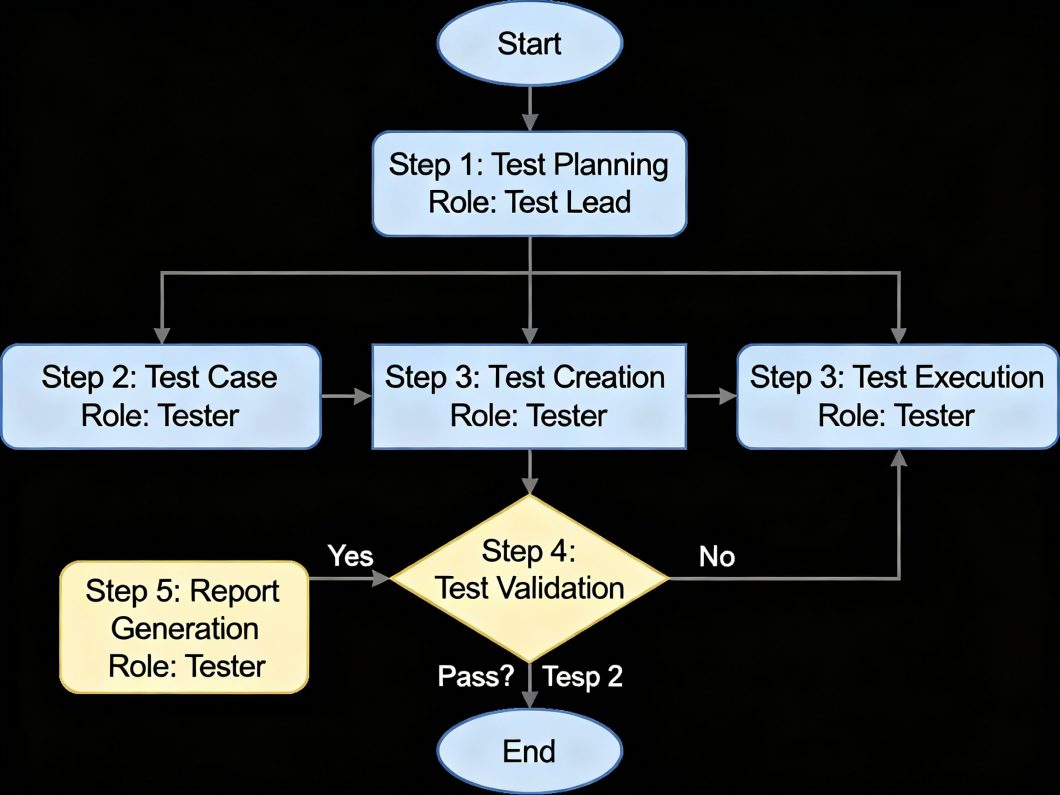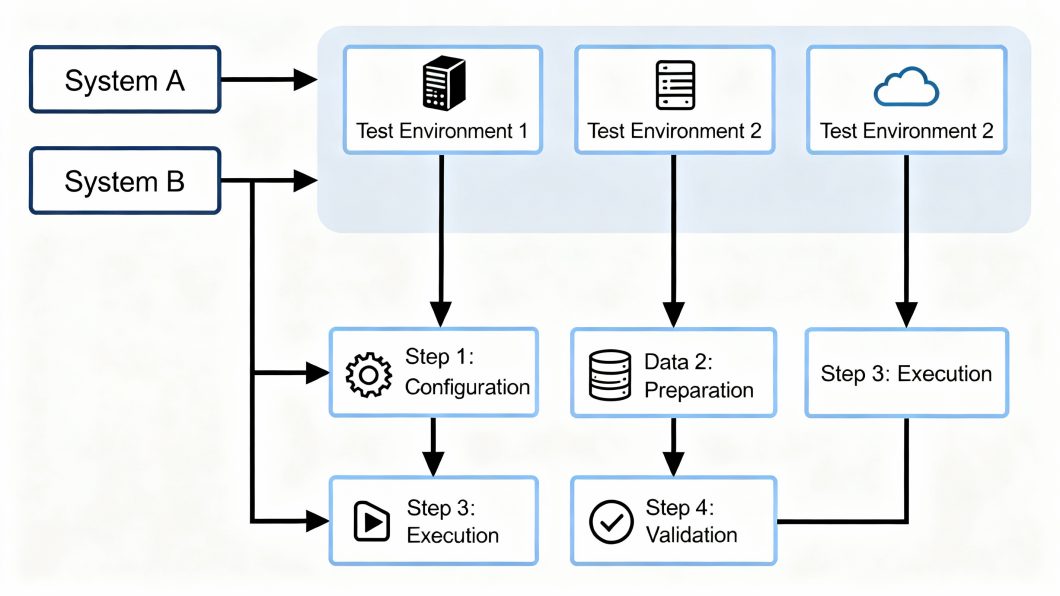The world of software development is rapidly shifting towards microservices architectures. These architectures break down applications into smaller, independent services that communicate with each other. While this approach offers numerous advantages, it also introduces new challenges, particularly in testing how these services interact seamlessly.
This blog post explores two prominent approaches for microservices testing: Integration Testing and Contract Testing. We’ll delve into their functionalities, strengths, and weaknesses to help you decide which method (or combination) best suits your needs.
What is Contract Testing?
Contract Testing focuses on verifying communication between services through pre-defined agreements (contracts). These contracts define the expected behavior (requests and responses) for both the service providing data (the provider) and the service requesting data (the consumer). Contract testing ensures services adhere to the intended interface and can communicate effectively.
What is Integration Testing?
Integration Testing simulates real-world interactions between microservices by spinning up replicas of each service and testing how they work together as a whole. This approach ensures the application functions as expected and meets overall requirements.
Benefits of Integration Testing
- Comprehensive Testing: Provides a thorough assessment of how microservices interact, including security, error handling, and data consistency.
- Improved Quality: Ensures the entire application meets the desired requirements.
Challenges of Integration Testing in Microservices
Integration testing offers a comprehensive view of microservice interactions, but it comes with its own set of hurdles to overcome in the context of microservices architectures
Complexity of Distributed Systems:
- Microservices are often distributed across different servers or environments, making it challenging to set up a realistic testing environment that replicates production conditions.
- This can lead to inconsistencies between test results and real-world behaviour.
Dependency Management:
- Microservices can have complex dependencies on each other, creating a cascading effect where a failing test in one service can be difficult to isolate and pinpoint the root cause.
- Managing the versions of dependent services during testing can also be a challenge, as changes in one service might break the integration with another.
Time Consumption and Resource Requirements:
- Spinning up multiple service instances and running integration tests for every possible interaction between them can be time-consuming and resource-intensive.
- This can slow down development cycles and make it difficult to keep pace with frequent deployments.
Mock Object Overhead:
- In some cases, integration testing might require mocking external services or dependencies that the microservices rely on.
- Creating and maintaining these mocks can add additional overhead to the testing process.
Limited Scope:
- While integration testing provides a good overall picture, it can be challenging to achieve 100% coverage due to the sheer number of potential interactions between services.
- Defining a comprehensive testing scope that covers all edge cases and scenarios can be difficult.
Head-to-Head Comparison: Contract Testing vs Integration Testing
Scope and Focus: Interface vs System Wide
Contract testing focuses tightly on the agreement between two applications. It checks the exact requests and responses they exchange, making sure both sides agree on the interface’s shape and behavior. This prevents integration surprises early by verifying the contract upfront.
Integration testing takes a broader view. It examines how multiple components or systems interact together to deliver complete features. The goal is to ensure workflows and data flows span boundaries smoothly and that the entire system behaves as expected.
Speed and Feedback Loops
Contract tests are lightweight and run quickly. They fit naturally into early development stages and continuous integration pipelines. Developers get fast feedback on contract changes, speeding up debugging and reducing downstream issues.
Integration tests are heavier. They require multiple components to be up and running and a test environment that mirrors production. Because of this complexity, feedback loops are slower, often showing issues later in the development process.
Complexity and Environment Needs
Contract testing works in isolation. It uses mocks to replace dependencies so each side can test independently. This reduces setup complexity and allows teams to work in parallel.
Integration testing depends on fully assembled systems. Managing databases, external services, message queues, and configuration makes the test environment complex and sometimes fragile. Maintaining consistency across test runs is challenging.
Maintenance and Flakiness
Contract tests tend to be stable. They focus on precise contracts and mock data, minimizing false alarms. Keeping contracts up to date ensures tests remain reliable and meaningful.
Integration tests are prone to flakiness. Environmental differences, timing issues, and external dependencies can cause intermittent failures. These tests need regular upkeep, adding ongoing workload to teams.
Deployment and Collaboration Impact
Contract testing encourages clear service boundaries and independent deployments. Teams can deliver faster and with greater confidence because contracts define precise integration points.
Integration testing confirms that the system functions end to end, but often requires synchronized deployments and coordinated testing efforts. This can slow down release cycles but strengthens cross-team collaboration.
Contract Testing Advantages over Integration Testing
- Manageability: Breaks down testing into smaller, more manageable units focused on interactions between two services at a time.
- Efficiency: Uses mocks (simulations) to simplify the testing process and avoid complex setups with multiple services.
- Focus: Ensures clear testing scope by concentrating on the interactions between specific pairs of services.
- Version Control: Makes it easier to track microservice versions involved in each test.
- Early Detection of Issues: Catches compatibility problems early in the development lifecycle.
- Faster Development: Enables parallel development and testing based on contracts.
Contract Testing and Integration Testing: Choosing the Right Approach
While both approaches offer distinct advantages, they address different testing aspects. Contract testing excels in verifying service communication through defined agreements, while integration testing provides a broader view of how services work together in a simulated production environment.
In most cases, a combination of both methods is ideal. Contract testing can be used as a first line of defense to identify communication issues early on. Then, integration testing can provide a more comprehensive assessment of overall application functionality before deployment.
Complementary Roles in the Test Pyramid
-
Contract testing fits at the base of the test pyramid, providing fast feedback on API contracts early in development.
-
It helps catch integration errors before code merges, enabling a shift-left approach.
-
Integration testing sits higher in the pyramid, validating end-to-end workflows across multiple components.
-
It ensures that systems work together as expected in real-world scenarios.
-
Together, these testing types balance speed and coverage for efficient, high-quality software delivery.
Implementation Tips for Contract Testing and Integration Testing
-
Choose contract testing for quick, focused validation of service interactions, especially in microservices environments.
-
Use integration testing to verify complex system-wide behaviors and end-to-end flows.
-
Combine both in CI/CD pipelines to catch issues early and ensure system integrity before production.
-
Promote communication and collaboration between development, QA, and operations teams to align testing strategies.
-
Regularly update and maintain test suites to keep pace with evolving software and prevent flaky results.
Contract Testing Implementation

-
Define the expected interactions from the consumer side by writing tests that specify API requests and responses.
-
Run consumer tests that simulate the provider behavior using mocks and generate a contract file capturing these expectations.
-
Share the contract file with the provider team for verification against the real API implementation.
-
Provider runs contract verification tests to ensure compliance and identify mismatches early.
-
Publish contract and verification results to a centralized broker to track versions and ensure alignment.
-
Automate contract testing by integrating these tests into CI/CD pipelines for fast, continuous validation.
-
Collaborate across teams to resolve contract failures and update contracts as APIs evolve, maintaining seamless compatibility.
Integration Testing Implementation
-
Set up a test environment that closely resembles production with all necessary services deployed.
-
Prepare realistic test data to simulate actual user interactions and system states.
-
Start testing interfaces individually to verify communication, data formats, and error handling.
-
Execute end-to-end workflows, focusing on critical user paths and edge cases.
-
Log defects with clear context for efficient troubleshooting and assign priorities.
-
Collaborate with developers to resolve issues and retest affected areas.
-
Automate tests and integrate them into CI/CD pipelines for continuous validation.
Conclusion
Building robust microservices architectures requires a harmonious blend of testing strategies. Integration testing offers a holistic view, ensuring seamless service interaction under simulated production conditions. However, its complexity in distributed systems necessitates a complementary approach.
Contract testing steps in, providing a streamlined and efficient method to verify communication through pre-defined agreements. By focusing on individual service interactions, it fosters faster development and early detection of compatibility issues.
The most effective approach leverages the strengths of both. Contract testing lays the foundation, catching communication breakdowns early. Integration testing then takes the stage, providing a final validation of the full microservices orchestra before deployment. This combined approach ensures the smooth operation of your microservices symphony.
The Role of Software Testing Companies in Implementing Contract and Integration Testing
Companies specializing in software testing play a crucial role in helping organizations implement contract and integration testing effectively. They guide teams in setting up automated contract tests that validate API interactions early, preventing integration issues before they reach production. Mindfire’s automation testing services enable organizations to achieve faster feedback loops and more reliable CI/CD pipelines, reducing costly delays.
At the same time, we support complex integration testing by creating realistic test environments that simulate system-wide workflows. Our expertise ensures thorough validation of end-to-end processes across multiple services. Balancing contract and integration testing with professional software testing services accelerates delivery while maintaining high quality and robust software performance.

